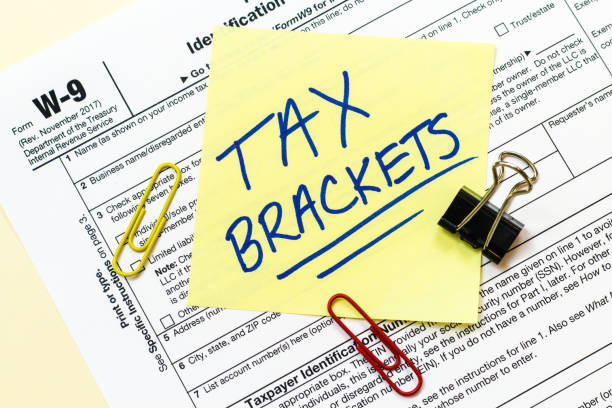Introduction to Tax Brackets: Navigating the Basics
Tax season can feel overwhelming, but understanding tax brackets is a great way to take control of your finances. Tax brackets determine how much of your income is taxed at different rates. Contrary to popular belief, moving into a higher tax bracket does not mean all your income is taxed at that higher rate—only the portion that falls within the bracket. Let’s break it down so you can confidently manage your tax situation.
Impact of Tax Brackets on Your Wallet: Decoding the Influence
Your income is divided into segments, each taxed at different rates. For example, if you earn $75,000, part of your income is taxed at the lowest rates, while only the portion above certain thresholds gets taxed at higher rates. This is called a progressive tax system.
Example: If the 22% tax bracket applies to incomes between $47,150 and $100,525 (for single filers), only the portion of your income in that range is taxed at 22%. The rest is taxed at lower rates.
Understanding the 22% Tax Bracket: What It Means for You
The 22% tax bracket is often considered a moderate tax rate. For single filers in 2024, this bracket covers incomes from $47,150 to $100,525. While 22% may sound like a lot, remember that only the portion of your income within this range is taxed at that rate.
Comparison: The 10% and 12% brackets apply to lower portions of your income, while higher brackets like 24% and 32% affect those earning more.
Calculating Your Federal Tax: A Guide for $75,000 Income Earners
Let’s say your taxable income is $75,000. Here’s how your tax is calculated:
- The first $11,000 is taxed at 10%.
- The portion from $11,000 to $47,150 is taxed at 12%.
- The portion from $47,150 to $75,000 is taxed at 22%.
After adding up these amounts, deductions and credits can further lower your taxable income, reducing the amount you owe.
The Seven Tax Brackets: Exploring Each and Related Incomes
For 2024, the U.S. tax system includes seven tax brackets:
- 10%: Up to $11,000
- 12%: $11,000–$47,150
- 22%: $47,150–$100,525
- 24%: $100,525–$191,950
- 32%: $191,950–$243,725
- 35%: $243,725–$609,350
- 37%: Over $609,350
Historically, tax brackets have changed based on economic policies and government priorities. Keeping up with these changes helps with long-term financial planning.
Conclusion: Making Informed Financial Decisions with Tax Knowledge
Understanding tax brackets can help you make smarter financial decisions. Whether you’re planning for deductions, estimating tax refunds, or strategizing investments, knowing how your income is taxed is essential.
Quick Tips:
- Contribute to retirement accounts to reduce taxable income.
- Take advantage of available tax credits.
- Consider tax-efficient investments.
For more information on tax planning, visit IRS.gov or consult a tax professional.

Understanding how tax brackets work can really change how you approach your finances. I used to think moving into a higher bracket meant all my income would be taxed more, but realizing it’s tiered made a big difference in how I plan deductions and savings. This breakdown helps take some of the fear out of taxes and it’s empowering to know how it really affects your wallet!
Hello!
Thank you for your comprehensive and enlightening article on understanding tax brackets and their impact on personal finances. Your clear explanation of the progressive tax system and how income is taxed in segments provides valuable insight, especially for those navigating tax season.
The example you provided for a $75,000 income earner, detailing how different portions are taxed at varying rates, effectively demystifies a concept that often causes confusion. It’s empowering to realize that moving into a higher tax bracket doesn’t mean all income is taxed at that higher rate, but only the portion within that bracket.
Your inclusion of practical tips, such as contributing to retirement accounts and utilizing tax credits, offers actionable steps for readers to manage their tax liabilities effectively. These strategies not only aid in tax planning but also promote long-term financial health.
Thank you for shedding light on this important topic and providing readers with the tools to make informed financial decisions.
Angela M 🙂